
BEHIND THE SCENES:
MINYADES
An exhibition of paintings by Richard Höglund
The Bonnier Gallery, Miami
December 2021
A Catalogue Essay

BEHIND THE SCENES:
MISCHA KUBALL
ReferenzRäume
Museum Morsbroich
5 December – 24 April 2022
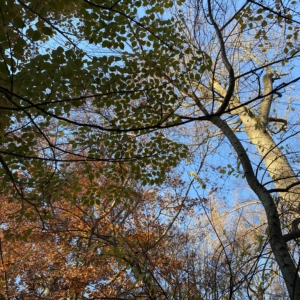
BEHIND THE SCENES:
ABOUT THE TREES
Thanksgiving 2021

UNAPOLOGETIC CONTENT.

BEHIND THE SCENES:
THE WORLD MAP
Thanks to Mr Hide
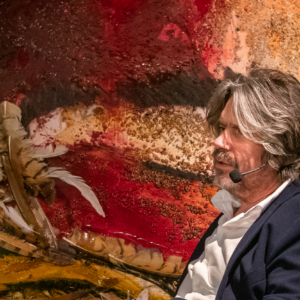
BEHIND THE SCENES:
KOEN VANMECHELEN LABIOMISTA, GENK (BELGIUM)
The book launch and debate
“NOT TO BE MISTAKEN”, November, 4th

BEHIND THE SCENES:
OCTOBER 2021
"Linda Karshan: The Covid-19 Conversation"
Still in the limelight
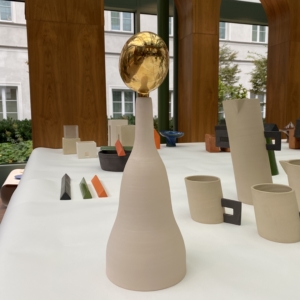
BEHIND THE SCENES:
IDE TO POLAND
POSTSCRIPT PARIS
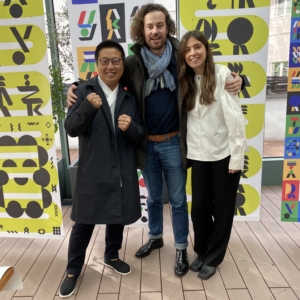
BEHIND THE SCENES:
IDE TO POLAND III
Out of the oven
Warsaw Sept 28-Oct 3

BEHIND THE SCENES:
HELMUT FEDERLE
NOVARTIS Campus – Forum 3, Basel
DIENER & DIENER - WIEDERIN
2005
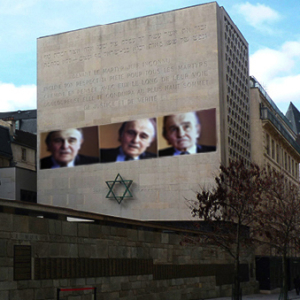
BEHIND THE SCENES:
BETWEEN LISTENING AND TELLING
Esther Shalev Gerz
Nuit Blanche Paris,
Tonight

UNAPOLOGETIC CONTENT.

BEHIND THE SCENES:
ART BASEL HALL 2.0C1
René Schmitt and ART & LANGUAGE
THESE SCENES, 2016

BEHIND THE SCENES:
MISCHA KUBALL
Wolfsburg and Utopias

BEHIND THE SCENES:
IDE TO POLAND
A new expedition on the CERAMIC & FOOD ROUTE

BEHIND THE SCENES:
IDE TO POLAND
A new expedition on the CERAMIC & FOOD ROUTE
Bright blue and white ceramics fill the dining room with warmth and visual appeal

BEHIND THE SCENES:
IDE TO POLAND
A new expedition on the CERAMIC & FOOD ROUTE
Starts today in Warsaw through 3 October

BEHIND THE SCENES:
ESTHER SHALEV-GERZ
SUMMER IN PARIS

UNAPOLOGETIC CONTENT.
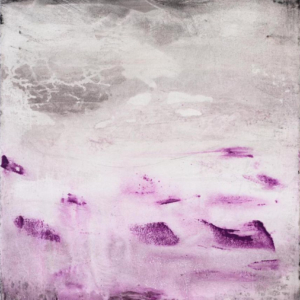
BEHIND THE SCENES:
ON THE ROAD AGAIN
ARCO MADRID,
1st Art Fair in 2 years

UNAPOLOGETIC CONTENT.

UNAPOLOGETIC CONTENT.

UNAPOLOGETIC CONTENT.

BEHIND THE SCENES:
IN THE ARTIST'S STUDIO
JASON BUTLER "THE COLLAGES"
Pop-Up Exhibition, Jersey
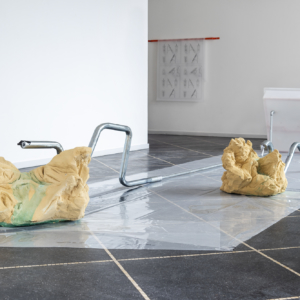
STILL BEHIND THE SCENES:
NINA NOWAK'S EXHIBITION
Galleri Susanne Ottesen, Copenhagen

BEHIND THE SCENES:
PER KIRKEBY UNREALISED BRICK PROJECTS
Galleri Susanne Ottesen, Copenhagen
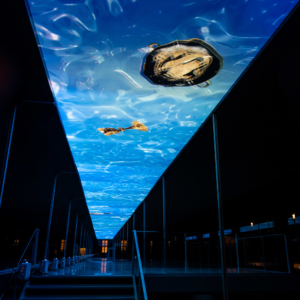
NEW ARRIVALS:
MISCHA KUBALL

A WALK IN MY LIBRARY:
HELMUT FEDERLE NIETZSCHE-HAUS SILS-MARIA
Schwabe AG Basel, 2004 Peter André Bloch & Jan Thorn-Prikker
on the occasion of Helmut Federle's "Edelweiss im Nietzsche-Haus, Sils-Maria" exhibition in Nietzsche's Haus, Sept 2004 to July 2005

BEHIND THE SCENES:
L'INTERSTICE ARLES OPENING
JOSETTE SAYERS AND GUILLAUME ZUILI'S PHOTOGRAPHS
Brave and fearless

BEHIND THE SCENES:
CONGRATULATIONS ISHMAEL ANNOBIL
DIRECTOR for "LINDA KARSHAN: COVID-19 CONVERSATION"
WINNER BEST SHORT DOCUMENTARY AT MYKONOS INTL FILM FES

BEHIND THE SCENES:
THE LAUNCH OF REAL TIME AND THE 3BS
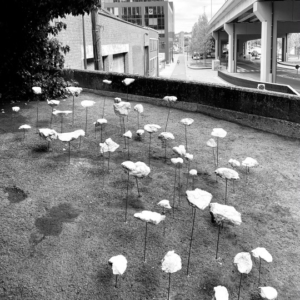
BEHIND THE SCENES:
FLOWERS OF PERHAPS
LIOR GAL
ENGELS PLEIN, LEUVEN BELGIUM
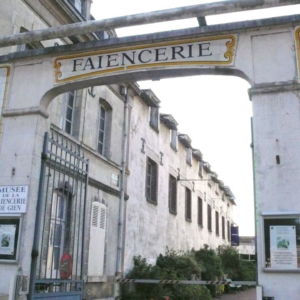
BEHIND THE SCENES:
MATHILDE BRETILLOT DESIGNS NEW MUSEUM FOR LA MANUFACTURE DE GIEN

THIS TIME TWO YEARS AGO:
DRAW ART FAIR, LONDON, 2019, DESIGNER MATHILDE BRETILLOT AND ARCHITECT MISKA MILLER-LOVEGROVE

NEW ARRIVALS:
WETTERLING, STOCKHOLM

A WALK IN MY LIBRARY:
HELMUT FEDERLE
ABSTRACT PAINTING OF AMERICA AND EUROPE
Ritter Verlag, Galerie nächst St. Stephan, Vienna Rosemarie Schwarzwälder, 1988

BEHIND THE SCENES:
LUKAS HOFFMANN, CNAP ACQUISITION AND TWO EXHIBITIONS

BEHIND THE SCENES:
ESTHER SHALEV-GERZ, WEFRAC 2021

BEHIND THE SCENES:
"LINDA KARSHAN: COVID-19 CONVERSATION"
selected by Nawada and Hollywood Boulevard Festivals

BEHIND THE SCENES:
ESTHER SHALEV-GERZ
CNAP ACQUISITION,
"Describing Labor", 2012

BEHIND THE SCENES:
A STUDIO VISIT WITH DEANNA PETHERBRIDGE

BEHIND THE SCENES:
JSVCPROJECTS & INTERNATIONAL DESIGN EXPEDITIONS
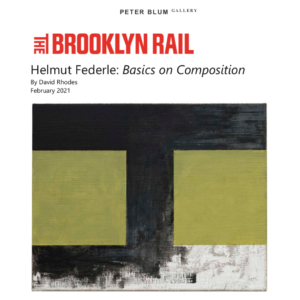
BEHIND THE SCENES:
HELMUT FEDERLE IN NEW YORK

BEHIND THE SCENES:
RICHARD MILAZZO OBSZINE #3
The Sadness of Bad Thinking

BEHIND THE SCENES:
RICHARD MILAZZO OBSZINE #3, ART, POETRY, AND THE PATHOS OF COMMUNICATION,
The Art of Impeachment

BEHIND THE SCENES:
WITH POET/CURATOR RICHARD MILAZZO
REVISITING OBSZINE #3

A WALK IN MY LIBRARY:
POETRY IN SEDITIOUS TIMES

HAPPY NEW YEAR AND SOUVENIRS FROM 2020!
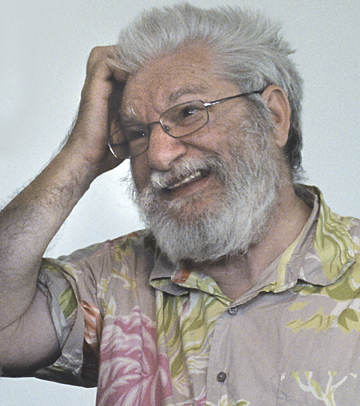
BEHIND THE SCENES:
LOSING DAN GRAHAM
1942-2022
February 21st 2022
PART I
I first came across Dan Graham’s work in 1980 when I began working with John Gibson. He had made a series of exhibitions earlier of Graham’s photographs at the time many of which were called “Homes for America”. John was also often talking about performance works like “Present Continuous Past(s)”; I remember seeing these fading cibachrome snapshots mounted one above the other that looked like many of the houses in areas around Philadelphia where I was raised. Suburban track housing which was typical of American culture after the war, when the GI’s came home. Every major city suddenly had suburbs being built, and in this period after 1968, artists were looking at these typologies as fertile grounds for conceptual art.
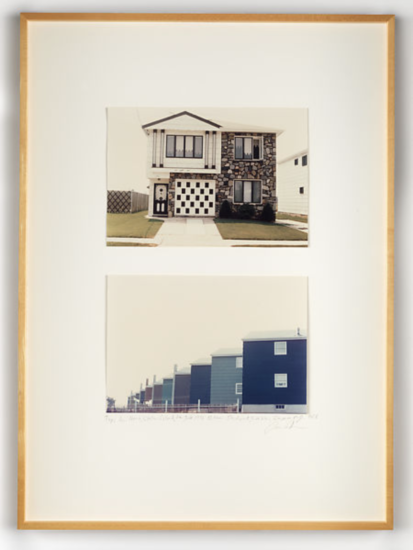
Two chromogenic prints, each image: 24,1 x 34,9 cm, frame: 89,5 x 64,8 cm © Dan Graham
Gibson also worked with Gordon Matta-Clark—who had already died much to young in ’78, after making radically brilliant work cutting holes in these abandoned places near Jersey City. Somehow cutting and dissecting was as exciting as photographing or filming them. Cutting shapes out of walls or through the exterior walls of houses or reams of paper gave Matta-Clark a sense of making sculpture from the built environment or in anything you might find. Graham was seeing what the post-war world looked like and needed to make this documentary kind of work to set the stage for what was coming later. I met Dan during this period, he was living not far from the gallery on Broadway and Prince; sometimes he came in to see John. Dan’s look was very relaxed, a well-worn t-shirt often with a stain from breakfast, pants that had been not laundered in a while. But he had a physical friendliness that was not present in other people. He talked easily to the youngest member of a gallery team. Asked questions.
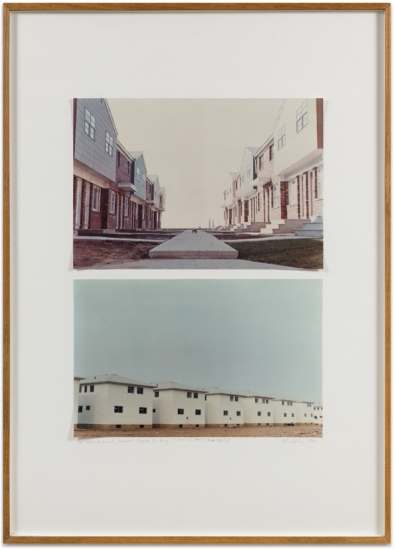
Two chromogenic prints, printed later, mounted to card signed, titled and dated in black ink on card recto, framed, each image approximately: 33,5 x 49,5 cm, card: 104 x 75 cm © Dan Graham
Dan never made much of a fuss, I would go out and get something for him and John from Dean & DeLuca, sometimes he was already gone by the time I arrived back. There were panels and installation drawings of performance ideas that involved his looking at things, and being seen by audience members. This sense of how looking happened, and what it was to see interested me a lot. At the time I was writing on dance and performance art which was starting to get very interesting in this time. I saw the photographs as a key to how he looked at stuff. Simplifying the terrain.

Colour photography, 74 x 68 cm © Dan Graham
PART II
Fast forward to the late 90’s I am in London at LISSON. Dan Graham is arriving in London and I am meant to work with him again. He shows up in the gallery with a shoulder bag and that is all. There is an important dinner with a museum director and curator; I see his flight on his shirt and take him to his hotel for a change of clothes but not before stopping at a store to buy him a clean shirt. He refuses trousers. That night there is an exhibition planned and one of his architectural models is sold. He said something like “oh it is you again, good.” Then we just were a duo, he trusted me. He liked to talk about Gibson, and New York but was more interested in what I could do for him in Europe. So we set on a path of work.
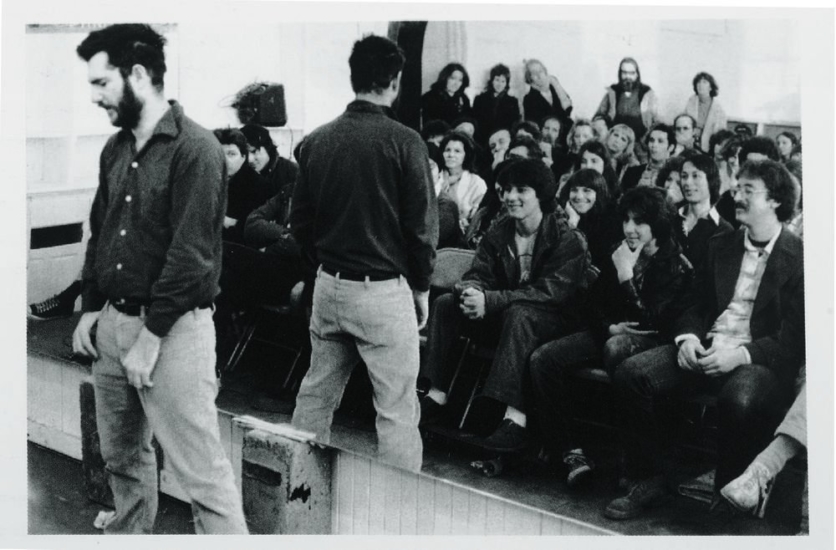
Single-channel video, black & white, sound, 22 min 52 s, MACBA Collection. MACBA Consortium, Barcelona, Spain © Dan Graham
We met again in New York as I flew over to take him from the city down to Dallas to site the “Argonne Pavilion II”, 1998, for the great collection of Howard Rachofsky, it was 2002. I picked Dan up in a taxi and by the time we got to LaGuardia he realised he didn’t have a photo ID of any kind. We had to make our morning plane because there was a big crew waiting for us at The Rachofsky House with crane, truck and tractor for 3pm. Dan was going to place the work in the landscape with all the people supporting him to settle it into the lawn. There was no time to go back, so I told him not to say a word, asked him to wipe the remains of his breakfast off his chin which was then a bit of beard, and marched in to the check-in desk to asking see the manager. I brought out a book that showed something he made at MOMA and convinced the man to let me take Mr Graham to the plane, I told him I would call the director of MOMA and they would vouch for this artists’ world importance.

Single-channel video, black & white, sound, 22 min 52 s, MACBA Collection. MACBA Consortium, Barcelona, Spain © Dan Graham
We just made the flight, we sited the work after a long period of moving it back and forth to catch its sight lines correctly, and the reflections were magic that day; afterwards he insisted we drive to the Kimball with Christian rock blaring loud in the convertible. “It must be a convertible Jill,” he had insisted at Hertz. “An acquired taste,” he said, “after Rock My Religion.” We were caught in a tornedo the following day and ended up staying in Dallas airport for a third day. I missed my flight back to London but thinking back, I remember he insisted on Kosher hot dogs and X rated magazines to keep him amused. I was in charge of his contentment, managed to find both in Dallas.
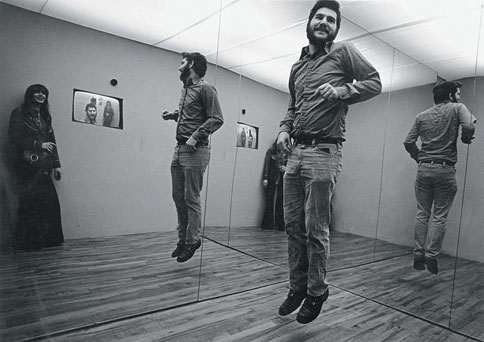
Installation view, New York © Dan Graham
PART III
These snippets do not do justice to his voracious mind, his endless curiosity, his interest in physical space, his own continuous discomfort with the world. He presented a kindly child-like manner that allowed him to do the serious work alone well protected from the aspects of the world that made him so uncomfortable. I remember his early performances about being seen, how a group observed him, how he observed them. His uncanny capacity to boomerang his own emotions through a room, through a camera lens, the delightful way he rolled down a hill with a camera hand held at his chest to see what the camera could see, was no less important than the way he conceived a skate board park. Or a public swimming pool as sites where one group would observe another.
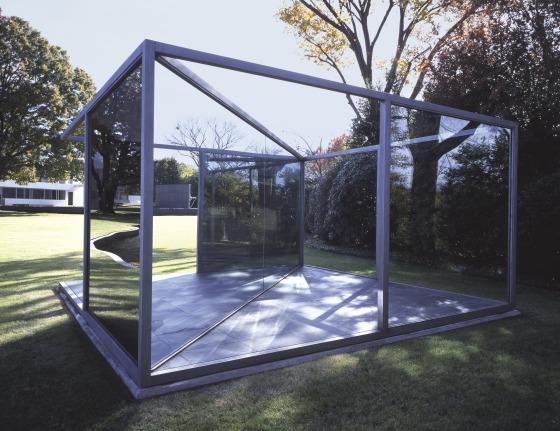
Installation, Stainless steel frame and floor, clear glass and two-may mirror, overall: 2 m 57,811 cm x 5 m 8,636 cm x 5 m 8,636 cm), Dallas Museum of Art, fractional gift of The Rachofsky Collection © Dan Graham
The development of his iconic pavilions now all over the world, with the mirror glass that allow us to control what is being seen, and then what is being mirrored, expanding the doors of perception and allowing the subject of how and what we see to be parsed in a new way. I am thinking of the John Berger’s famous comments in his “Ways of Seeing” of the early 70’s about men seeing women being seen by men. The object of desire always being aware of what is being expected of them, and whose gaze will present itself the longest. This was in the artworld a period where questions of visibility were rightfully front and center in politics. It was ripe and then grew less so for a number of years, we have seen it coming back now. Dan Graham was ahead of his time always, and for this his monumental contribution in photography, film, performance, texts, architecture and sculptures will be long analysed by art critics and curators, as well as collectors and young artists.
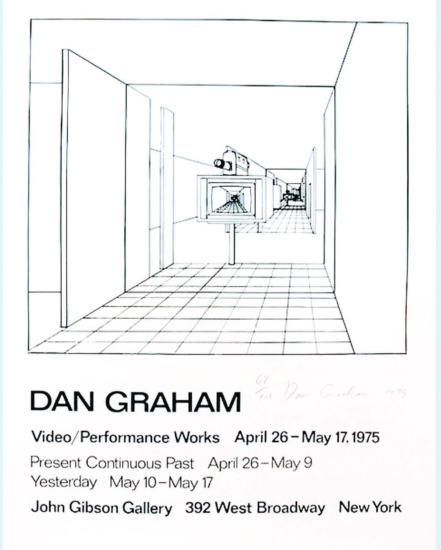
Offset print, Published by John Gibson Gallery, New York, Sheet: 55,9 × 43 cm, image (irregular): 47,3 × 35,9 cm © Dan Graham and John Gibson Gallery
I don’t remember the last time we spoke; there were years I stopped by his place whenever I was in New York. The papers piled high on his work table, the odd collection of dolls and model parts. Maybe it was in Venice. He always gave me the same cryptic smile and we realised it had been ages that we were in this together.

Photography by Bill Jacobson Studio, New York (reframe) © Dan Graham
David Gibson wrote about these two last images:
Dan Graham was one of the early pioneers of installation art in which gallery visitors create the everyday content by which the interactive dynamic is fulfilled. Works like Present Continuous Past (1975) would be transformed into ones like The Rooftop Urban Park Project at Dia Chelsea (1991-2004) “Constructed from a two-way mirrored glass, the walls of the pavilion shifted between transparent and reflective states as the intensity of light changed, creating changing and complex visual effects with the sky, surrounding landscape, and interactions with people on the roof.”
David Gibson on Instagram
